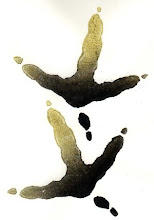
Thanksgiving on the Tidball ranch; a fantastic tradition that brings together family, friends, land, sky, and the creatures therein. Jim and Keith, each having shot multiple deer, felt sorry for my state of deprivation (22 hours in the stand and no deer seen) and devised a plan to push something past me.
The morn dawned grey and windy, strong out of the SE, so we drove around to the W of Keith’s back field and worked our way E. I wore my throwback hunter red and black plaid Woolrich coat that belonged to my grandfather. Jim and I each sat on a fencerow, and Keith chose the hickory lot. A brush-busting neighbor paid me a visit, having managed to sit on his stand for an entire 20 minutes!! After departing, he pushed out a couple of deer a couple hundred yards away. My deer shotgun is pretty low tech (smoothbore and no scope). It is more like bowhunting (gotta upgrade) so a few hundred yards feels like the next county. Probably they had been working their way right to me, but at least I had seen deer.
We regrouped. Keith had seen deer as well: a buck and four does. I still hunted my way along the N fenceline toward a good stand just off the corner of the field and with a good view as well of the big gully. A buck jumped up when I was about 30 yards away, but flashed through the thick stuff and was gone. No shot. I settled into the stand and Keith and Jim began a slow push toward me. Movement in the brush along the fenceline. A coyote! Despite farm protocols that suggest I should take advantage, I really didn’t want to shoot the dang thing.
I still wanted a deer.
About 5 minutes later, from where the coyote disappeared, I caught movement. A doe (or so I thought), working her way toward me, down in one of the smaller gullies that drop into the main branch. About 50 yards. She was coming closer but I saw that if she stayed in the gully, she would soon be below my line of sight. She showed me some chest and I held behind the shoulder and touched the trigger. She tumbled, letting out a bloodcurdling bawl that Jim heard from a couple hundred yards away. She lunged to her feet and then crashed down again, and lay still, white belly toward me. I sat still for 5-10 minutes, watching.
Dead deer.
I still hadn’t moved, but then suddenly she was on her feet, lunging away, too thick for a shot. I called to the boys and told them to watch out. Jim walked toward me along the fence, where I had last seen the deer. I still expected it to be dead along the fenceline.
A single shot from Jim. “Great,” I thought, “the finishing shot”. My heart sank, though, when Jim’s shot was followed by another, 10 seconds later. The deer was on the run, the chase was on, and my role was that of the guy trying to piece it together from afar. More shots from the gully. A call from Keith. “The deer is down!”. Relief. Followed by more shots. “What the ****?”
The deer was running the gully, with Jim following and Keith racing to outflank. He made it, to the promontory that overlooks “possum flats” where we dragged out his deer a couple of days earlier. The deer was trying to climb out of the gully to the east. If he made it to the open field, he’d be across route 89 and into the marsh on the other side. Keith hit him again, from ~150 yards across the gully, and down he went.
Only to get back up again.
To be hit at last from Jim. Bang. Dead deer.
Mostly. After yet another shot in the neck.
I have never seen an animal that wanted to live so much, that fought so hard, as this guy (as he turned out to be a button buck). Altogether we hit him five times. I surely am not proud of this, but I am proud of how well we coordinated as a team. Without the team effort, he surely would have not been ours. Much to be thankful for here—the winter meat yes, but so much more.









